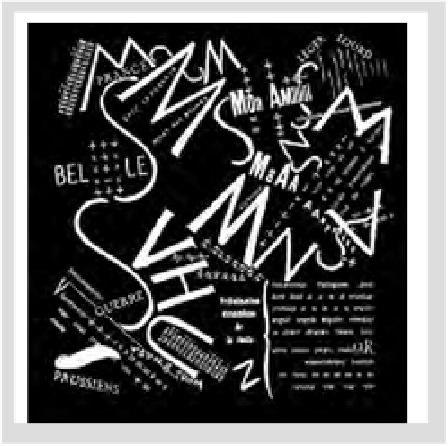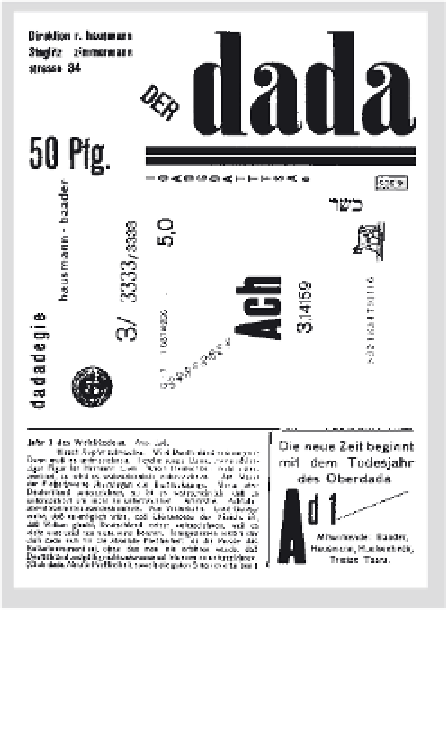Graphics Reference
In-Depth Information
A MULTIDIMENSIONAL LANGUAGE
6-1
“ping pong”
(Poet: Eugen Gomringer)
ping pong
ping pong ping
pong ping pong
ping pong
The typographic message is verbal, visual, and vocal. While typography
is read and interpreted verbally, it may also be viewed and interpreted
visually, heard and interpreted audibly. It is a dynamic communication
medium. In this sense, early twentieth-century typography became a
revolutionary form of communication, bringing new expressive power
to the written word. Consider the concrete poem “ping pong” (Fig.
6-1
).
The geometric structure of this poem is composed of a repetition of the
words
ping
and
pong
. As these words are repeated, they signify the
sound of a bouncing ping-pong ball, and the circular letters
p
,
o
, and
g
reflect the shape of the ball. The full impact of this poem is achieved
when it is read aloud. By hearing the sounds while viewing the
typographic forms, the typographic message is strengthened.
Significant departures from the use of conventional typographic
forms occurred in Europe at the beginning of the twentieth century.
During this activist period, experimentation in all the visual and
performing arts was affected by potent social and philosophical
changes, industrial and technological developments, and new
attitudes about aesthetics and modern civilization. Typographic
design was pulled into this artistic revolution as poets and visual
artists realized that both meaning and form could be intensified in
typographic communications.
The Futurist manifesto, written by the Italian poet Filippo
Marinetti in 1909, profoundly influenced thinking in Europe and Russia.
Futurism praised technology, violence, danger, movement, and speed.
Futurist typography, known as “free typography,” demonstrated these
ideas in a highly expressive manner (Fig.
6-2
; see also Fig. 1-125). The
chill of a scream was expressed in bold type, and quick impressions
were intensified through italics. Letters and words raced across the
page in dynamic motion.
6-3
Cover of the first
issue of
Der Dada
. (Editor:
Raoul Hausmann)
6-4
Title lettering for
De Stijl.
(Designer:
Theo van Doesburg)
Among the movements affected by Futurism were Dadaism
in France, Switzerland, and Germany; de Stijl in Holland; and
Constructivism in Russia. Each of these historical movements has had
a penetrating effect upon typography. Artists and designers associated
with these movements saw typography as a powerful means of
conveying information relating to the realities of industrialized society
(Figs.
6-3
to
6-5
; see also Figs. 1-129 to 1-135). They disdained what
typography had become: a decorative art form far removed from the
realities of the time. The architect Otto Wagner further emphasized
that “all modern forms must be in harmony with the new requirements
of our time. Nothing that is not practical can be beautiful.” Written in
1920, the second de Stijl manifesto clearly demonstrated the concern
for a new, expressive typography (Fig.
6-6
). With dramatic changes
taking place in the form and content of typography, the typographic
message became a multifaceted and expressive form of communication.
Typography needs to be read, seen, heard, felt, and experienced.
6-2
Les mots en liberté
futuristes
. (Designer:
Filippo Marinetti)







